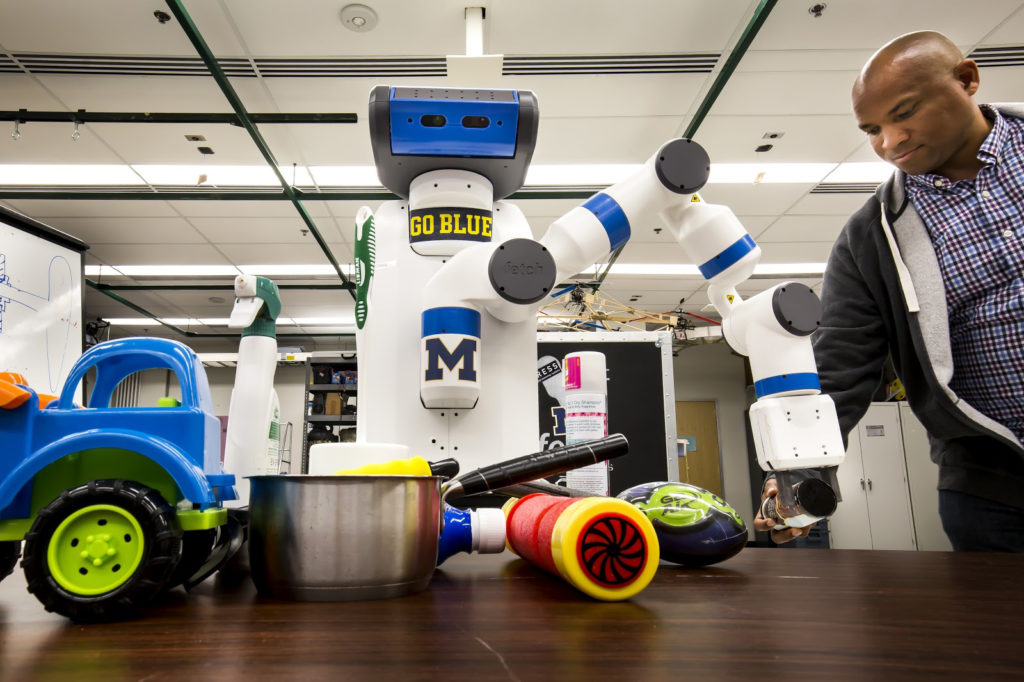‘Fake’ data helps robots learn the ropes faster
June 29, 2022
In a step toward robots that can learn on the fly like humans do, a new approach expands training data sets for robots that work with soft objects like ropes and fabrics, or in cluttered environments.
Developed by robotics researchers at the University of Michigan, it could cut learning time for new materials and environments down to a few hours rather than a week or two.
In simulations, the expanded training data set improved the success rate of a robot looping a rope around an engine block by more than 40% and nearly doubled the successes of a physical robot for a similar task.
Continue reading ⇒